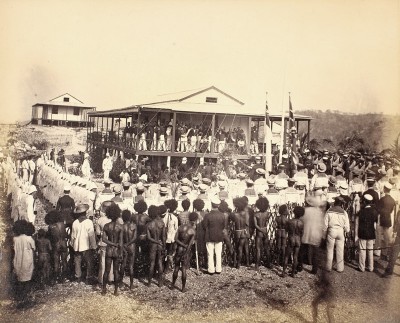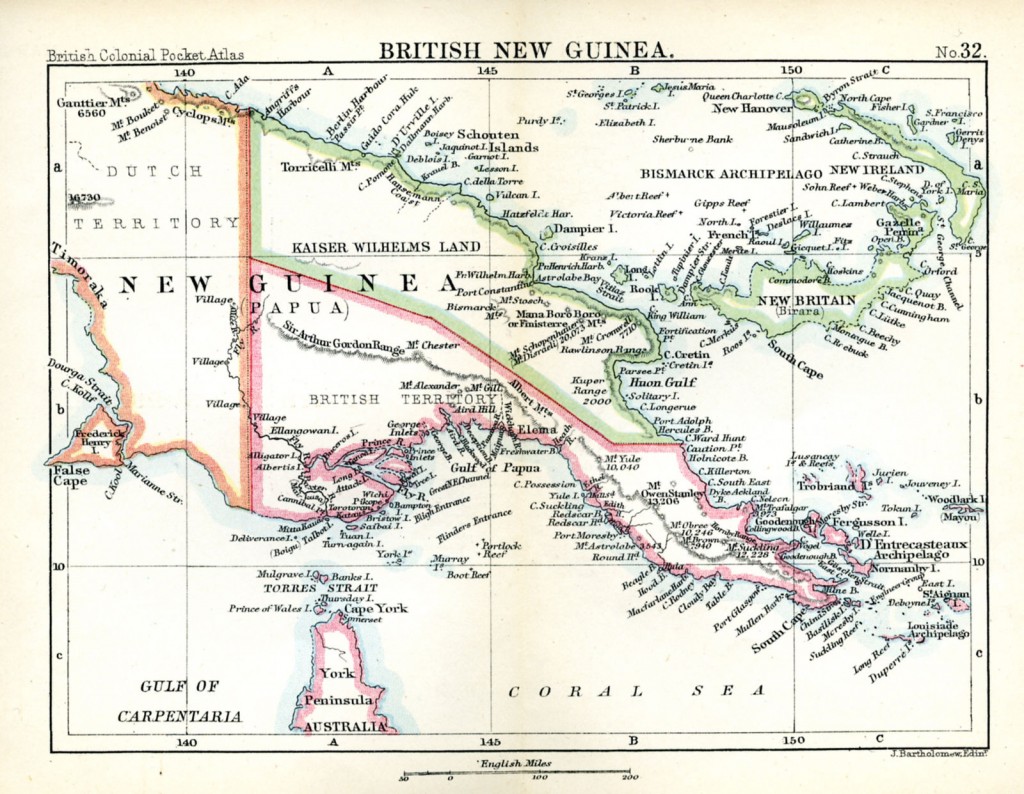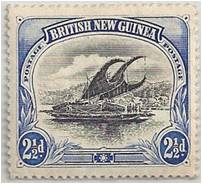ALBUM – View my British New Guinea album
Fast Facts
Region: Australia/Pacific
Group: British Colonies in the Pacific
Classification: Colony (British)
Prior Regime: Local tribal government
Key Dates:
1883, Apr 4 – The British Colony of Queensland annexes the south-western portion of New Guinea.
1884, Nov 6 – Britain revokes Queensland’s annexation and proclaims the protectorate of the British New Guinea territory
1888, Sep 4 – Britain fully annexes the territory and establishes British New Guinea as a Colony
1906, Sep 1 – British New Guinea transferred to Australia and renamed Territory of Papua
Following Regime: Papua, Australian Administration
Scott Catalogue: (Paupa New Guinea) #1-8
Pick Catalogue: none
History

In the 1880’s a rush for colonization of the eastern half of the island began in earnest. The Germans formally annexed the northern coast in 1884, naming it Kaiser-Wilhelmsland, later renamed German New Guinea. The British Colony of Queensland annexed south-eastern New Guinea on 4 Apr, 1883, but the following year as the Germans were annexing the north, the British revoked the claim, wanting direct control of the territory. On 6 Nov, 1884, the British government formally proclaims the territory of New Guinea as a protectorate.
On 4 Sept, 1888, the territory was annexed outright, and along with several adjacent islands was proclaimed the Colony of British New Guinea. The administration of the colony was carried out by the British Colonial Office but participation from the Australian colonies of New South Wales, Queensland and Victoria were critical to its success. With the creation of the new Federation of Australia in 1901, discussions began to transfer responsibility of the British New Guinea to Australia, as they were bearing the majority of the financial burden of colony, The transfer was formalized with the passage of the Papua Act. On 1 Sept, 1906, the transfer of British New Guinea to Australia took place and the Colony was renamed Papua.

Stamps
 ALBUM
ALBUM
For most of the colonial period, the administration of British New Guinea was from Queensland, therefore the postage in British New Guinea used stamps of Queensland cancelled with the designation “BNG”. In July, 1901, authorities issued a set of beautiful stamps depicting a native trading canoe called a “lakatoi”. The lakatori stamps were printed in black surrounded by a colored frame. The series was issued in 8 denominations.
When the administration of the colony was transferred to Australia in 1906, the colony was renamed “Paupa”, the the stamps were overprinted in black with th enew name until new stamps cound be issued. The new issues also featured the same lakatoi design, but British New Guineau was replaced with Paupa.
Banknotes
From my understanding, British currency was used in the territory and colony of British New Guinea.
Links
Papua New Guinea Records – 1883 – 1945
History of British New Guinea from BritishEmpire.co.uk





You have provided very good information and it is very valuable. It is very useful for people to read about such information. Thank you so much for this
Thank you for your kind words. Glad you enjoy the site
Michael